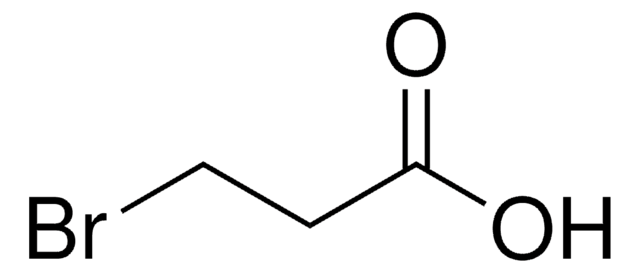All Photos(1)
About This Item
Linear Formula:
C6H5CH2OC6H4CH2OH
CAS Number:
Molecular Weight:
214.26
Beilstein:
1877819
EC Number:
MDL number:
UNSPSC Code:
12352100
PubChem Substance ID:
NACRES:
NA.22
Recommended Products
Assay
97%
form
solid
mp
86-87 °C (lit.)
functional group
hydroxyl
phenyl
SMILES string
OCc1ccc(OCc2ccccc2)cc1
InChI
1S/C14H14O2/c15-10-12-6-8-14(9-7-12)16-11-13-4-2-1-3-5-13/h1-9,15H,10-11H2
InChI key
OEBIVOHKFYSBPE-UHFFFAOYSA-N
Looking for similar products? Visit Product Comparison Guide
Application
4-Benzyloxybenzyl alcohol was used in the synthesis of:
- 13C-labelled derivatives of the isoflavonoid phytoestrogens, genistein, biochanin A, daidzein and formononetin
- benzyl4-(tert-butyldiphenylsiloxy-M1-carbamoyloxymethyl)phenylether
Storage Class Code
11 - Combustible Solids
WGK
WGK 3
Flash Point(F)
Not applicable
Flash Point(C)
Not applicable
Personal Protective Equipment
dust mask type N95 (US), Eyeshields, Gloves
Choose from one of the most recent versions:
Already Own This Product?
Find documentation for the products that you have recently purchased in the Document Library.
Federica Tonolo et al.
Antioxidants (Basel, Switzerland), 9(2) (2020-02-06)
Due to their beneficial properties, fermented foods are considered important constituents of the human diet. They also contain bioactive peptides, health-promoting compounds studied for a wide range of effects. In this work, several antioxidant peptides extracted from fermented milk proteins
The synthesis of precisely structured polyurethanes. Part 2. Chain building methodology.
George MH, et al.
Journal of the Chemical Society. Perkin Transactions 1, 12, 1395-1401 (1996)
Synthesis of [4-13C]-Isoflavonoid Phytoestrogens.
Whalley JL, et al.
Tetrahedron, 56(3), 455-460 (2000)
Alexandre Murza et al.
Organic & biomolecular chemistry, 15(2), 449-458 (2016-12-08)
Apelin is the endogenous ligand for the G protein-coupled receptor APJ and exerts a key role in regulating cardiovascular functions. We report herein a novel series of macrocyclic analogues of apelin-13 in which the N- and C-terminal residues as well
Armine Avetisyan et al.
Neurochemistry international, 140, 104799-104799 (2020-08-14)
The receptor for advanced glycation end products (RAGE) is considered to contribute to the pathogenesis of Alzheimer's disease (AD), mediating amyloid beta (Aβ) accumulation, mitochondrial damage, and neuroinflammation. Previously, we have synthesized small peptides corresponding to the fragments (60-76) (P1)
Our team of scientists has experience in all areas of research including Life Science, Material Science, Chemical Synthesis, Chromatography, Analytical and many others.
Contact Technical Service








